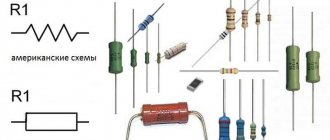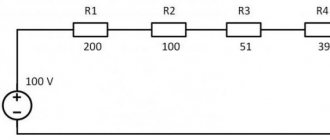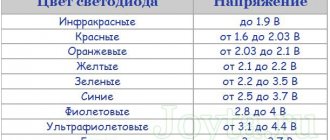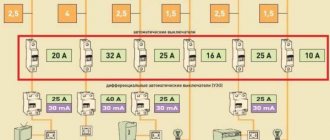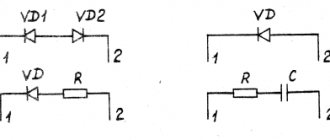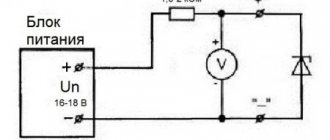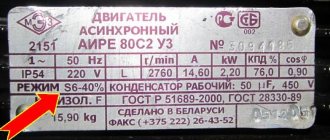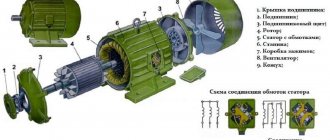Three digit code
The easiest to read are SMD resistors, which contain a 3-digit digital code. Their first two digits are the numerical value, and the third digit is the multiplier, that is, the number of zeros that we must add to the value.
Let's look at this with an example:
A resistor with code 472 has a resistance of 4700 Ohms or 4.7 kOhms, since we must add 2 zeros (third digit) to the number “47” (the first two digits).
The following figure shows a few more examples:
SMD resistor marking table (code/nominal/size/power) table
SMD resistors marking table:
| Code | Nominal, W | Size | Power V |
| 0402 | 0.062 | Length 1.0 ±0.1, width 0.5 ±0.05, height 0.35 ±0.05 | 100 |
| 0603 | 0.1 | Length 1.6 ±0.1 width 0.85 ±0.1 height 0.45 ±0.05 | 100 |
| 0805 | 0.125 | Length 2.1±0.1 width 1.3 ±0.1 height0.5 ±0.05 | 200 |
| 1206 | 0.25 | Length 3.1 ±0.1 width1.6 ±0.1 height0.55 ±0.05 | 400 |
| 1210 | 0.33 | Length 3.1 ±0.1 width 2.6 ±0.1 height0.55 ±0.05 | 400 |
| 2010 | 0.75 | Length 5.0 ±0.1 width 2.5 ±0.1 height 0.55 ±0.05 | 400 |
| 2512 | 1 | Length 6.35 ±0.1 width 3.2 ±0.1 height 0.55 ±0.05 | 400 |
| 0075 | 0,02 | Length 0.3 Width 0.15 | 100 |
| 01005 | 0,03 | Length 0.4 Width 0.2 | 100 |
| 0201 | 0,05 | Length 0.6 Width 0.3 | 100 |
| 1218 | 1 ; 1,5 | Length 3.2 Width 4.8 | 150 |
| 1812 | 0,5; 0,75 | Length 4.5 Width 3.2 | 200 |
Today there are a huge number of highly specialized parts that differ in their advantages and disadvantages. For example, there are capacitors that can operate at high temperatures, almost 230 °C, there are those that are designed to work in aggressive environments, and milliohm chip resistors have also appeared. There are capacitors that can only be used in certain circuits. The table above indicates standard options, but actual power dissipation may vary.
Three-digit code for resistors with a resistance of less than 10 ohms
In the system described above, the minimum resistance value we can code is 10 ohms, which is equivalent to the code "100" (10 + no zero).
For resistance values less than 10 ohms, another solution must be found because instead of adding zeros, we must divide the value of the first two digits. To solve the problem, manufacturers use the letter "R", which is equivalent to a comma.
For example, resistance code 4R7 is equivalent to 4.7 ohms because we replace "R" with a comma. If the resistance value is less than 1 ohm, we use the same system by placing R as the first number. For example, R22 is 0.22 ohms. As you can see, it's quite easy.
Types of SMD resistor markings
An important characteristic of resistors is the size. In simple words, this is the size, length and width of the body. It is by taking these elements into account that it is possible to select the appropriate board layout.
Reference! All sizes of SMD resistors in the documentation are indicated using special numbers and letters. The first numbers can indicate the dimensions, which are given in millimeters, the second pair of characters can indicate the width, also in millimeters.
Let's look at some typical resistor sizes and their decoding by numbers:
- SMD resistors 0201: length = 0.6 mm, width = 0.3 mm, height = 0.23 mm. The nominal values are 0 Ohm, 1 Ohm - 30 MOhm. Power is only 0.05 W, voltage maximum 50 V.
- SMD resistors 0402: length = 1.0 mm, width = 0.5 mm, height = 0.35 mm. The nominal values are 0 Ohm, 1 Ohm - 30 MOhm. Power is only 0.05 W, voltage maximum 100 V.
- SMD resistors 0603: length = 1.6 mm, width = 0.8 mm, height = 0.45 mm. The nominal values are 0 Ohm, 1 Ohm - 30 MOhm. Power is only 0.01 W, voltage maximum 100 V.
- SMD resistors 0805: length = 2.0 mm, width = 1.2 mm, height = 0.4 mm. The nominal values are 0 Ohm, 1 Ohm - 30 MOhm. Power is only 0.125 W, voltage maximum 200 V.
- SMD resistors 1206: length = 3.2 mm, width = 1.6 mm, height = 0.5 mm. The nominal values are 0 Ohm, 1 Ohm - 30 MOhm. Power is only 0.25 W, voltage maximum 400 V.
- SMD resistors 2010: length = 5.0 mm, width = 2.5 mm, height = 0.55 mm. The nominal values are 0 Ohm, 1 Ohm - 30 MOhm. Power is only 0.75 W, voltage maximum 200 V.
- SMD resistors 2512: length = 6.35 mm, width = 3.2 mm, height = 0.55 mm. The nominal values are 0 Ohm, 1 Ohm - 30 MOhm. Power is only 1 W, voltage maximum 400V.
Four-digit code (precision resistors)
In the case of precision resistors, manufacturers have created another coding system consisting of 4-digit numbers. In it, the first three digits are the numerical value, and the fourth digit is the multiplier, that is, the number of zeros that we must add to the value.
The fact of having three digits to encode a value allows us to have greater variety and precision of meaning.
Resistor values for the series E3, E6, E12, E24
| E3 | E6 | E12 | E24 | E3 | E6 | E12 | E24 | E3 | E6 | E12 | E24 |
| 1,0 | 1,0 | 1,0 | 1,0 | 2,2 | 2,2 | 2,2 | 2,2 | 4,7 | 4,7 | 4,7 | 4,7 |
| 1,1 | 2,4 | 5,1 | |||||||||
| 1,2 | 1,2 | 2,7 | 2,7 | 5,6 | 5,6 | ||||||
| 1,3 | 3,0 | 6,2 | |||||||||
| 1,5 | 1,5 | 1,5 | 3,3 | 3,3 | 3,3 | 6,8 | 6,8 | 6,8 | |||
| 1,6 | 3,6 | 7,5 | |||||||||
| 1,8 | 1,8 | 3,9 | 3,9 | 8,2 | 8,2 | ||||||
| 2,0 | 4,3 | 9,1 |
EIA-96 code (precision resistors)
Recently, manufacturers have been using a new encoding system for precision resistors - EIA-96, which is quite difficult to decipher if you don’t have a lookup table or online calculator at hand.
In EIA-96, the first two digits of the code are the index number of the table in which we will find the equivalent value, while the letter is the multiplier. Thus, the presence of a letter at the end of the code indicates that the resistor is EIA-96 coded.
The figure below shows a complete table of EIA-96 resistance markings.
EIA-96 Case Studies
In the following figure we can see some examples of EIA-96 markings
What is the marking of smd resistors
SMD resistors are permanent parts that are required for surface mounting on a board. If we compare smd resistors and metal film resistors, the former will be several times smaller, but there are also those that are larger, which is why there is a marking of smd resistors. They also differ in shape; there are square, rectangular and round and even oval. Carefully studying the SMD resistor markings, you can note that the markings can be digital or alphabetic.
The main difference between SMD resistors is the presence of small contacts that are inserted into the printed circuit board. Let's look at why resistor markings are needed.
Why do we need resistor markings?
Considering the fact that SMD resistors are small in size, they cannot be color coded, so manufacturers have developed a different marking method. As a rule, the designation of smd resistors contains three or four numbers; letters may be present.
- Digital marking of resistors is necessary in order to indicate the numerical value of the resistance of the resistor, the last digit is a multiplier. It can also indicate the power that must be raised to 10 to get the final result. For example, resistance can be determined this way: 450 = 45 x 10 equals 45 Ohms.
- If the marking is EIA-96, then this means that the resistors are high precision. This standard is intended for resistors that have a small resistance of 1%. This marking system has three elements: 2 numbers that indicate the denomination code, and the letters are a multiplier. The numbers are a code that gives the resistance number. For example, code 04 may indicate 107 ohms.
For convenient calculation, a calculator is used that will help you quickly find the resistance value. To calculate, you need to enter the code that is on the component and the resistance will immediately appear below. This calculator is suitable not only for the standard. To more accurately check the resistance, it is best to use a multimeter for calculations. Read here which is the best multimeter to choose.
What characteristics does it show?
The most important characteristics of the parts are the value of the nominal resistance, the tolerance on the value and the temperature coefficient. Any of these characteristics is related to the power of SMD resistors and the resistance between it and the ambient temperature. In some areas, even noise characteristics are taken into account.
Important! Component characteristics include stability, voltage, resistance dependence and frequency parameters.
To understand this issue in detail, you need to carefully study all the characteristics:
- The value of the nominal resistance. The tolerance on the nominal resistance value is specified as a percentage. This value indicates the resistance of the resistor under external influences on it.
- Temperature. As a rule, the natural temperature is +20°C and there should be normal atmospheric pressure. SMD resistors are produced with a tolerance for nominal resistance ranging from ±0.05% to ±5%.
- Accuracy. The most accurate resistors can be considered those that are calculated using the formula TKS=DR/(R*DT). DR means the change in resistance when the temperature changes by the amount DT, R is the nominal value of the resistance.
If the components can be calculated using this formula, then this means that they have the highest accuracy.
Series of preferred values for electronic components
At the beginning of the 20th century, resistors were used mainly in radio receivers and, together with other components, were called radio components. Now this name refers to all elements used in electronic circuits that have nothing to do with radio and therefore radio components began to be called electronic elements and components (this, as always, is a tracing paper from English). Although this is how to say it! The phone has at least five radio receivers (for communication with the base station, GPS/GLONASS, Wi-Fi, NFC, VHF receiver), but no one remembers this and does not consider the phone a radio receiving device. But we digress from the topic. Although it is possible to make a resistor with any resistance, it is more convenient to produce a limited number of components, especially since each resistor has a certain tolerance on the value. More precise resistors cost more than less precise resistors. Conventional logic shows that for standard values it is convenient to choose a logarithmic scale, with equal intervals between standard values, which are determined taking into account the permissible deviation from the nominal value. For example, for an accuracy of ±10%, it makes sense for a decade (the interval in which the resistance changes from 1 to 10, from 10 to 100, and so on) to take 12 values: 1.0; 1.2; 1.5; 1.8; 2.2; 2.7; 3.3; 3.9; 4.7; 5.6; 6.8; 8.2, then 10; 12; 15; 18; 22; 27; 33; 39; 47; 56; 68;82 and so on. These values are called denomination series. They are standardized in the form of series E3–E192
and are used not only for resistors, but also for capacitors, inductors and zener diodes. Each row (E3, E3, E6, E12, E24, E48, E96, and E192) divides the decade into 3, 6, 12, 24, 48, 96, and 192 standard values. Note that the E3 series is outdated and used extremely rarely.
How to check yourself
If you are not yet confident in deciphering codes, there are two ways to check the resistance of the resistor. The first is software, the second is using a multimeter. The second one is more reliable, since you see the real state of things, and at the same time check the resistance of the element.
One of the programs for deciphering resistor codes “Resistor 2.2”: color coding
It’s easy to find a program for deciphering resistor codes—more than a dozen pop up upon request. They are simple, differing only in the scale of the databases. Not all code options can be found in every one, but popular ones are available everywhere. In these programs, you first select the type of encoding (letters or stripes), and then enter all the data. What you enter is displayed in a special window so that you can visually check the correctness of the entered information. After entering the data, press the button, the program gives you the denomination and tolerance. Compare with what you got.
Checking the resistance with a multimeter
You can also check how correctly you determined the resistance of the resistor by coding using a multimeter. To do this, set it to the “change resistance” mode. We select the range depending on what we counted. We apply one probe to one terminal, the second to the other. The resistance is displayed on the screen. It may differ from the calculated one. The difference depends on the tolerance. The larger the tolerance, the greater the difference can be. But in any case, the readings should be comparable to the found denomination. See the video for details.
